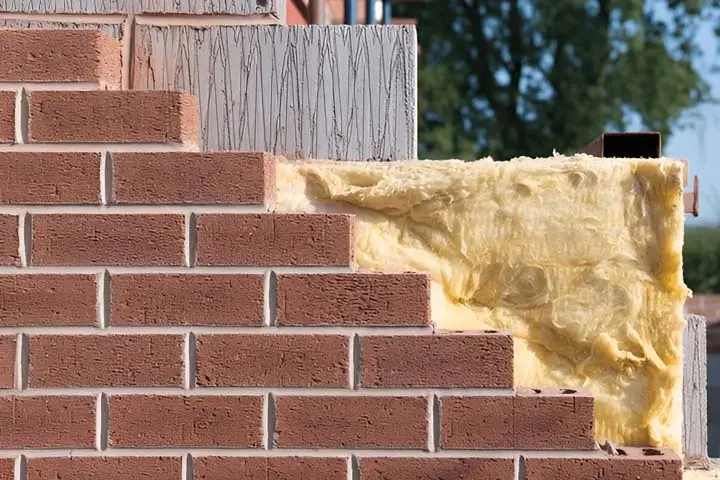Table of Contents
Cavity wall insulation could save up to 20% on energy bills of your home— but does it cost a fortune? Cavity wall insulation is a process of filling the space (cavity) between inner and outer walls (masonry) with insulating materials.
This insulation is designed to reduce heat loss and improve thermal efficiency with a 50mm layer of insulation materials like mineral wool and polystyrene beads.
Wall insulation cost is a deciding factor for homeowners on whether or not their homes will get insulated.
While the cost of insulation depends on various factors (which we will discuss below) the energy savings potential and a comfortable temperature is a major and certain attraction for UK households.
This article explores the wall insulation costs, factors influencing it, and how it can impact your energy efficiency ratings.
Key Insights:
Here are the key factors highlighted throughout this article:
- Wall cavity insulation costs can range from £300 to £6,750 for 1000 square feet.
- Factors like insulation materials, square footage, labour costs, demographic viability, and installation complexities.
- You can avail government grants to cover the wall insulation costs by qualifying a simple eligibility criteria.
N-Grams: wall insulation cost”, “average cost”, “cost range”.
What Is the Cost of Cavity Wall Insulation?
Cavity wall insulation is a cost-effective solution to improve the energy efficiency of UK households. The wall insulation cost can vary depending on the house area, material choice, labour costs, and demographic variability (rural vs urban) of homes.
Below is the breakdown of cost per square foot/square metre and calculations of average project cost.
Cost per Square Foot: The average cost per square foot ranges from £0.30 to £6.75. The cost varies as per the selection of materials and other factors.
Cost Range: If we assume the area of your home is 1000 sq ft, and the cost ranges from £0.30 to £6.75 per square foot, the cost range for the project would be £300 to £6,750.
Average Cost: The average cost depends on the area of your home. For a 1000 sq ft, considering the cost per sq ft, the average cost for your home wall insulation would be £3,525 for a 1000 square foot area.
N-Grams: “cost factors”, “project size”, “square footage”, “labour cost breakdown”, “material choice”, “installation complexity”.
Factors Influencing Cavity Wall Insulation Costs
1. Material Choice
material choice is a major factor which influences the cost of cavity wall insulation. Material selection affects the cost per square foot and energy efficiency of your home significantly. The below table breaks down the common insulation materials and their cost range.| Material | Cost (Sq Ft) | Pros | Cons | Best For |
| Fiberglass | $0.30 – $1.50 | The most affordable, energy-efficient, easy to install. | Low R-value compared to others | Budget friendliness |
| Cellulose | $0.80 – $2.00 | Soundproof, eco-friendly | Gets affected by moisture over time | Retrofits and standard cavity wall insulation |
| Spray Foam | $2.00 – $6.75 | Insulated with an airtight seal, higher R-value | Expensive, and needs special expertise to install | Baltic weather, homes requiring higher insulations |
| Mineral Wool | $1.40 – $3.00 | Soundproof, fire-resistant | Material is heavier, and difficulties in installation | A home requiring safety from fire |
Additional Insulation Materials
Besides the main and commonly used insulation materials, here are some less common and affordable insulation materials:- Polystyrene: One of the most affordable and lightweight insulation materials.
- Rigid Foam Board: An insulating material with high thermal resistance and highly durable for cavity wall insulations.
- Radiant Barrier Insulation: this type of insulation material is suitable for hot climates.
- Cork Board: This is the most sustainable and natural insulation material with acoustic properties.
- Sheep Wool: this is a natural, environment-friendly, breathable, and moisture-resistant insulation material.
2. Project Size and Square Footage
3. Labour Costs and Regional Variability
| UK Region | Average Labour Cost (per hour) |
|---|---|
| London and South East | £30 – £45 |
| Midlands | £25 – £35 |
| North England | £20 – £30 |
| Scotland & Wales | £18 – £28 |
4. UK Government Incentives and Grants
Apply for Free Boiler Replacement!
Cost Breakdown for Wall Cavity Insulation of a 1000 sq ft Home
If we take the scenario of a 1000 sq ft home and take exemplary material and labour costs, here is the breakdown of the wall cavity insulation cost range:
- Material choice: Fiberglass $0.30 – $1.50 cost per sq ft
- Labour cost: £18 – £28 for Scotland and Wales (rural areas)
- Energy Savings Potential: £110 to £406 annually
If we analyse this scenario, the minimum total cost would be £516 for a 1000 sq ft area and 4 labourers working for 4 hours. While the maximum total costs can rise to £1,836 for the same square footage.
Conclusion
To wrap this guide up, the cost of wall cavity insulation can vary depending on material choice, labour costs, square footage, and regional viability.
However, there are also various government schemes available for UK households for energy efficiency measures such as insulation, central heating systems, and installation of heat pumps. UK homeowners can get a hold of these grants by fulfilling their easy eligibility requirements.
This guide breaks down the average costs for cavity wall insulations and factors influencing the costs. We hope this article will help me make an informed decision regarding your insulation requirements.
If you need help with applying for ECO4 grants, you fill out the above eligibility form to check eligibility and then provide your contact details so our experts can contact you.
Frequently Asked Questions
Cavity walls are responsible for 25% of heat escaping through the walls, insulating those cavities can save you 20% on the energy costs. That means, getting your cavity walls insulated is totally worth it. Apart from saving money, you will also experience a comfortable home temperature.
Yes, schemes like Great British Insulation Grants, Energy Company Obligation (ECO4), and Home Upgrade Grants (HUG2) provide partial and fully funded grants for cavity wall upgrades. However, you need to meet the eligibility criteria which is different for all schemes. But, the core requirement is you being a low-income household.
This is a sign of cavity wall insulation deterioration. Your cavity wall insulation must be old or damaged, you need to get it checked if it needs to be replaced. In case you have recently installed it, it might be less thick or damaged by moisture or dampness. It is always a good option to get it checked by the experts.
If your cavity wall is filled with insulation material, the chances of moisture penetration increase. That means moisture is able to transfer from outside to inside the wall. This might lead to an increased risk of areas of dampness. However, if you have used a water-resistant insulation material like fibreglass batts, the risk of dampness or mould formation decreases.



